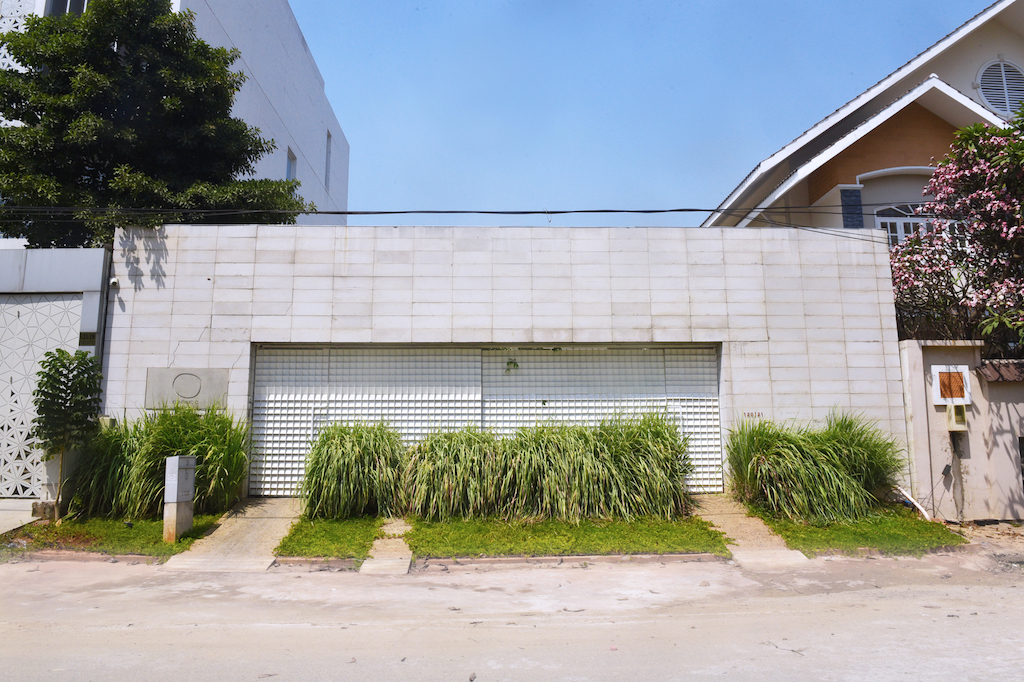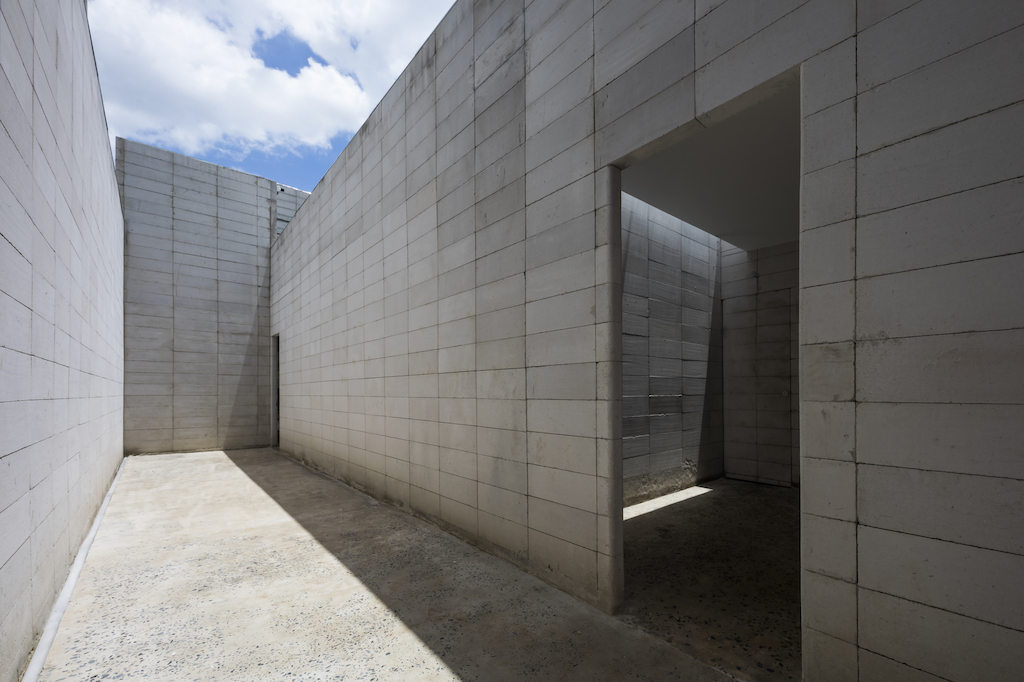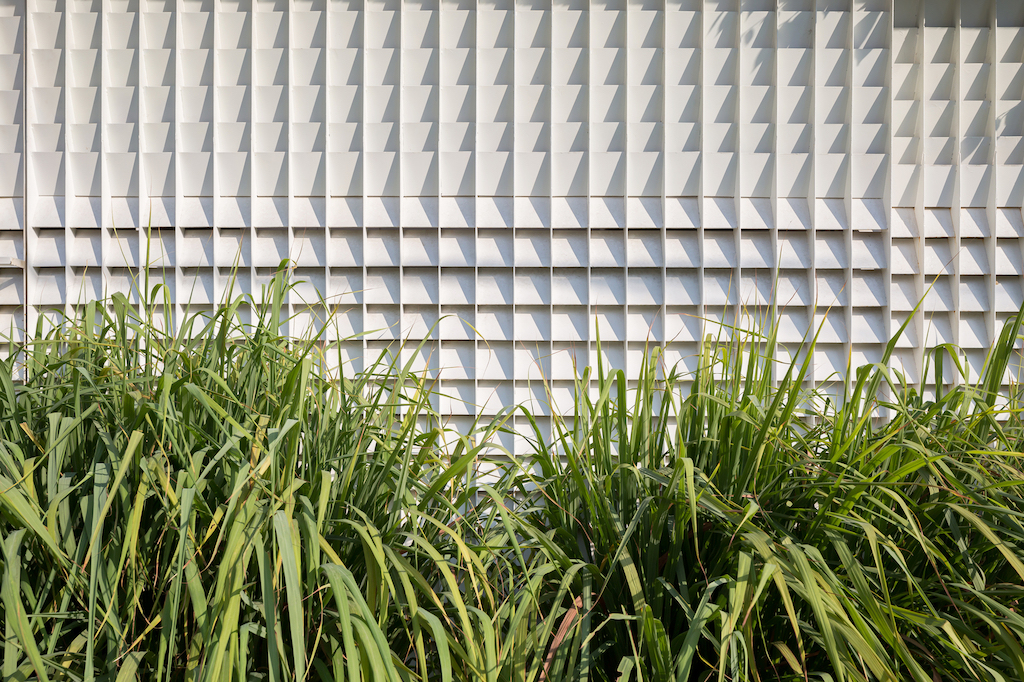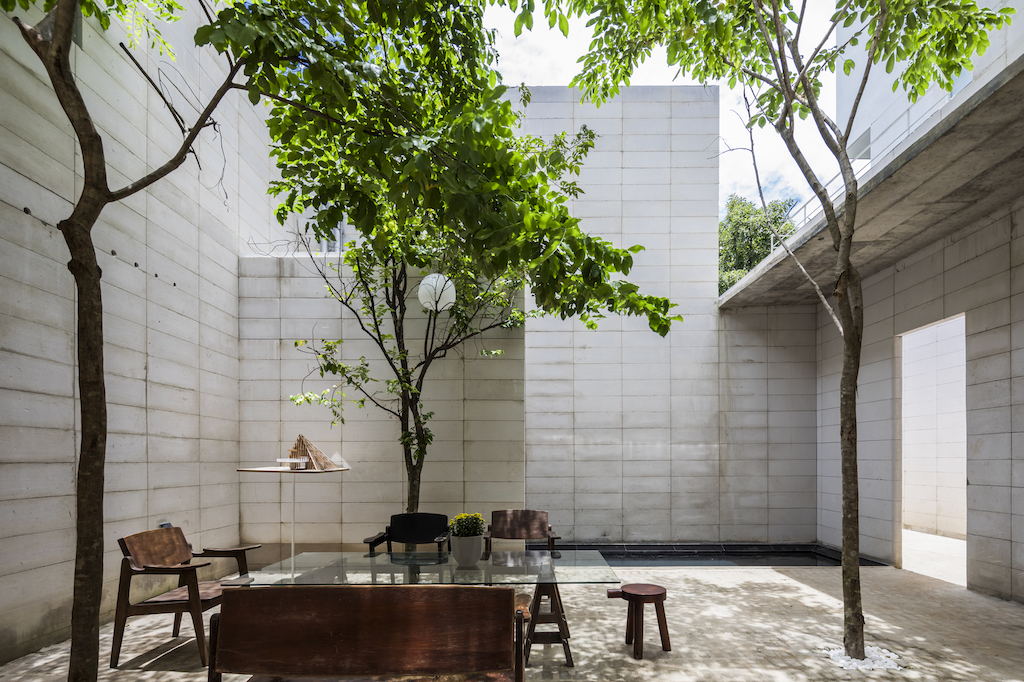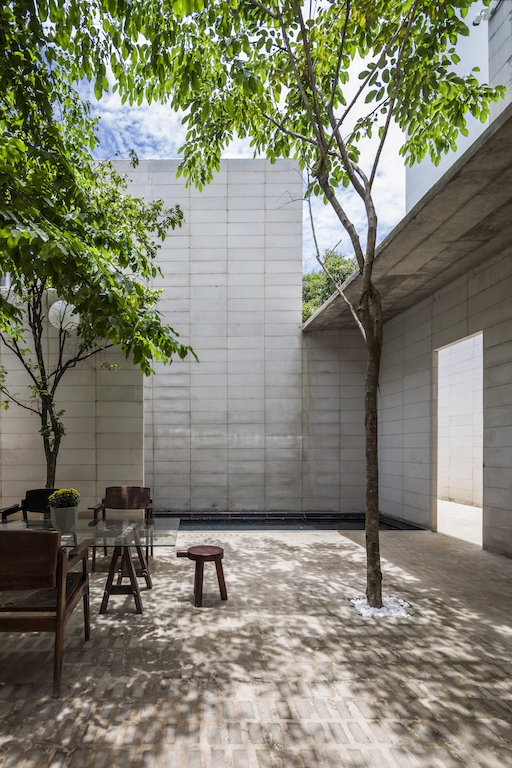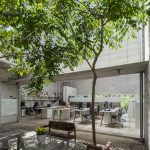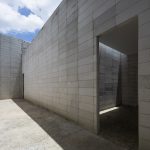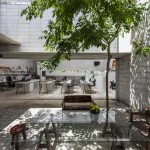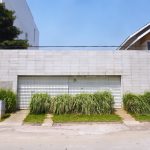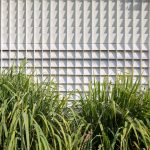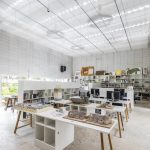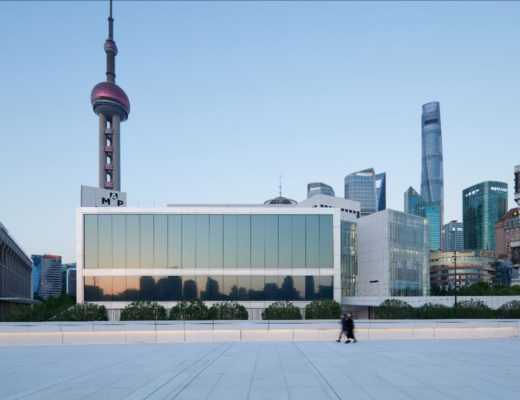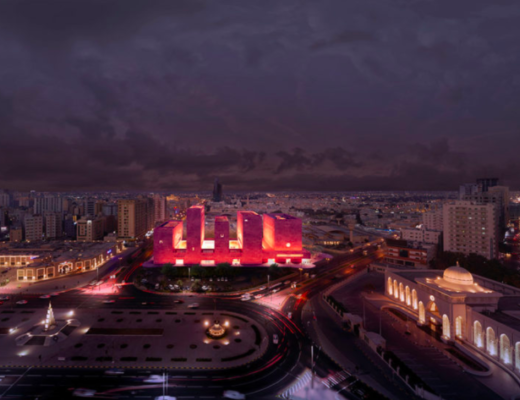Vietnamese practice Kientruc O, led by Dam Vu and Anni Le and assisted by Phuong Doan and Viet Nguyen, has designed a 221m² workspace for its own practice in Ho Chi Minh City that centers on the binary principle of open and close by splitting the office into smaller spaces and allowing movement to flow freely across the floor.
Intermediate zones continually wraps around the office’s two main areas – the void and the working area. The walls function as the unbound partition and the spatial arrangement splits the spaces to still and fluid, yielding diverse spatial quality.
Spaces recollect their form and shape by receiving light, giving way to shadow, and imparts a lightness through the floating walls, successively creating intimate spaces and rendering the atmosphere into silence and serene. The ventilation and cooling strategy resting upon three criteria in passive cooling methods to cope with tropical weather in Vietnam: heat prevention, heat modulation and heat dissipation. The office design is focused on protecting the indoor micro-climate from sunlight and choosing building orientation. Vegetation helps to reduce the impact of the sun on the exterior fabric.
The ventilation strategy for the office is a counter approach to the common scheme found in modern tropical buildings. It is entirely naturally ventilated. Both traditional and mechanical methods are used to quickly release the indoor heat and maximise air circulation. Controlling entrance of wind and solar access contributes to creating a comfortable indoor environment. Muli-layered roof system helps air to ventilate while protecting the main workspace from being overheated. The long and thin floor plan introduces multiple buffer zones shaded by a suitable wall and veranda ratio. Air flows freely through the openings on walls and roofs to facilitate a natural form of comfort.
Monochromatic manipulation of material renders the architecture in a spatio-temporal state, acting as a background to highlight the natural phenomenon happening among the spaces. The autoclaved aerated concrete (AAC) block has low thermal conductivity and is nonabsorbent in nature, which is suitable for both interior and exterior use and contributes significantly to heat modulation. Its monochromatic finishes blur the perception of the inside and outside, making the space versatile and constantly adapting its spatial characteristics according to its purpose of use and the activity taking place.
See the full gallery here:
Photos: Hiroyuki Oki, Hoang Le
You might also like:
Charged Voids designs India office with enclosed ellipse interjected with skylights and courtyards
Neri&Hu transforms former drab sales office into Junshan Cultural Center in Beijing
Neri&Hu transforms former drab sales office into Junshan Cultural Center in Beijing


